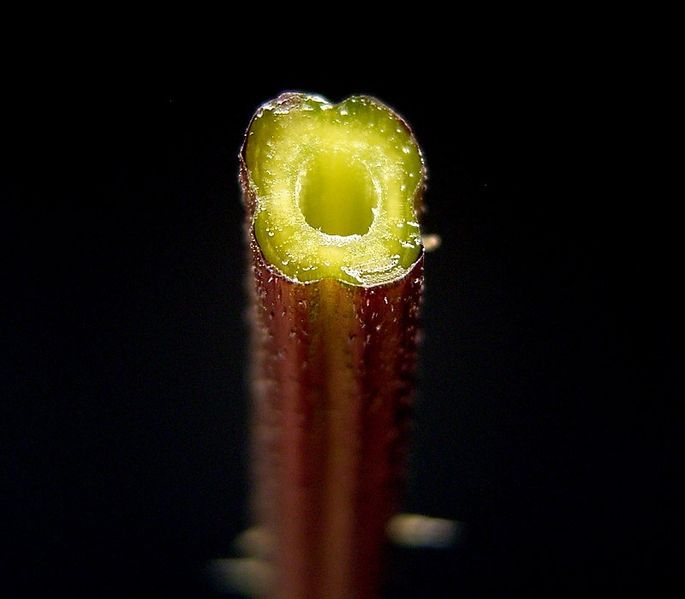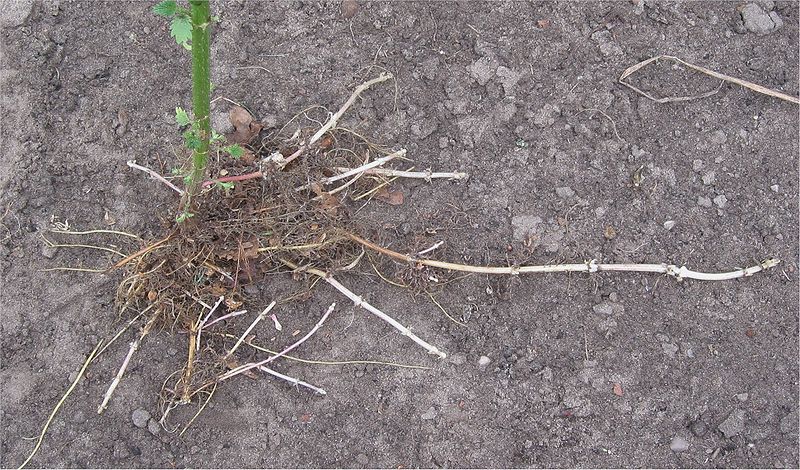Grabbing Some Grub, Nettle Style
Stinging nettles are photosynthetic plants,
meaning that they convert light energy into chemical energy in
the form of bonds of sugar (C6H12O6).
To undergo photosynthesis, nettles need water (H2O),
carbon dioxide (CO2) and energy from light. This
process occurs in the chloroplasts of the plant, which are mainly
located in the leaves of the plant.
 Stinging nettles obtain water from the
ground by using rhizomes, or underground roots, that branch out to
the side of a main root. These roots do not penetrate deeply, but the
branching allows for a single plant to obtain water and nutrients
from a greater area. The water is then transported up the xylem
of the plant to the chloroplasts in order to aid in photosynthesis.
Water is also retained along the stem and leaves of the plant in the
cell’s vacuoles to help maintain structure.
Stinging nettles obtain water from the
ground by using rhizomes, or underground roots, that branch out to
the side of a main root. These roots do not penetrate deeply, but the
branching allows for a single plant to obtain water and nutrients
from a greater area. The water is then transported up the xylem
of the plant to the chloroplasts in order to aid in photosynthesis.
Water is also retained along the stem and leaves of the plant in the
cell’s vacuoles to help maintain structure.  Urtica dioica grows best in nitrogen rich
soil and can grow in disrupted environments where few other plants
can survive.
Urtica dioica grows best in nitrogen rich
soil and can grow in disrupted environments where few other plants
can survive.The plants themselves contain high amounts of iron, calcium, folic acid, potassium, manganese, carotenoids and vitamin C, making them an incredibly nutritious wild green.
Stinging nettles often grow three to seven feet in height, growing toward the sun to gain an advantage over neighboring plants in receiving more light energy. The green leaves of the plant usually grow one to six inches in length, are covered in visible veins used for water and nutrient transport and have rigid, tooth-like edges. The base of the leaf is often shaped like the top half of a heart. The leaves and stem are covered in stinging hairs to protect the valuable nutrients within the plant.
Discover the two sexes of stinging nettle plants and how they reproduce.